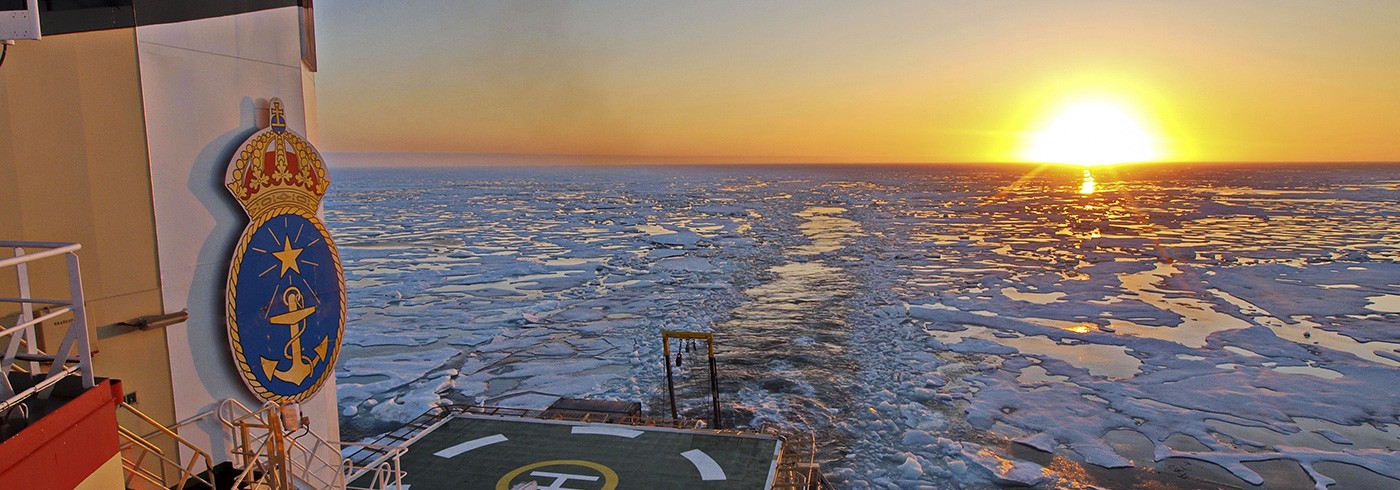First days of surveys in the working area north of Wrangel Island is now over. Our Russian colleagues have completed some long successful survey lines using their electromagnetic system. We are very pleased how well this has worked and excited to eventually see the data over Herald Canyon when it has been processed. This is the beauty of a collaborative project; we can all merge our data get a better chance to answer SWERUS-C3 research questions.
Herald Canyon forms a bathymetric trough in the seafloor where Pacific water flows into to the Arctic Ocean. The Pacific water is relatively warm and fresh. During the morning August 24, the wind had calmed down providing us with an opportunity to do sediment coring and oceanographic stations in and around the canyon. We aimed for a transect across Herald Canyon for the purpose of studying the Pacific water influx.
Oden’s installed sub-bottom profiler collects information about the sediments below the seafloor. The sub-bottom profiling data showed beautiful sediment sections below the seafloor suitable for coring. The plan was to use the calm weather opportunity to both do coring and send out our small 6.4 m long survey vessel RV Skidblader. ”I operate the multibeam sonar systems on Skidbladner and I need one to assist with driving the boat.” This was going to be Tom Flodén from Stockholm University. We launched the boat with Oden’s crane. It went really smooth. A big swell would make this launch very difficult.
Waves were building quite fast as the wind was increasing, but there was yet not a big ocean swell. After some initial surveying we got a problem with the heading that is supplied from two GPS antennas. I went out to the front of the boat to reach for the starboard GPS antenna and jiggle the cable. I had to lean over the bow a bit to reach. All of a sudden a big “monster” came up from the deep just some 5 meters from my face and made a big snort! It was a large male walrus. He looked at me for a while and then swam away and dove down. He certainly managed to surprise me a lot, and for a fraction of a second I think my heart stopped! But when I saw what it was and that he gently swam away, it was altogether just a nice experience; something I will never forget! Better a walrus than a shark, although I know walruses can be a bit bad tempered as well.
Well back on the ship a multicore had been retrieved and it was time for our first big piston core. Launching and handling went really smooth even if it was the first time for all. The 9 m long core came back nearly full – jackpot! We recovered more than 8 m of sediment which must be considered a big success!


